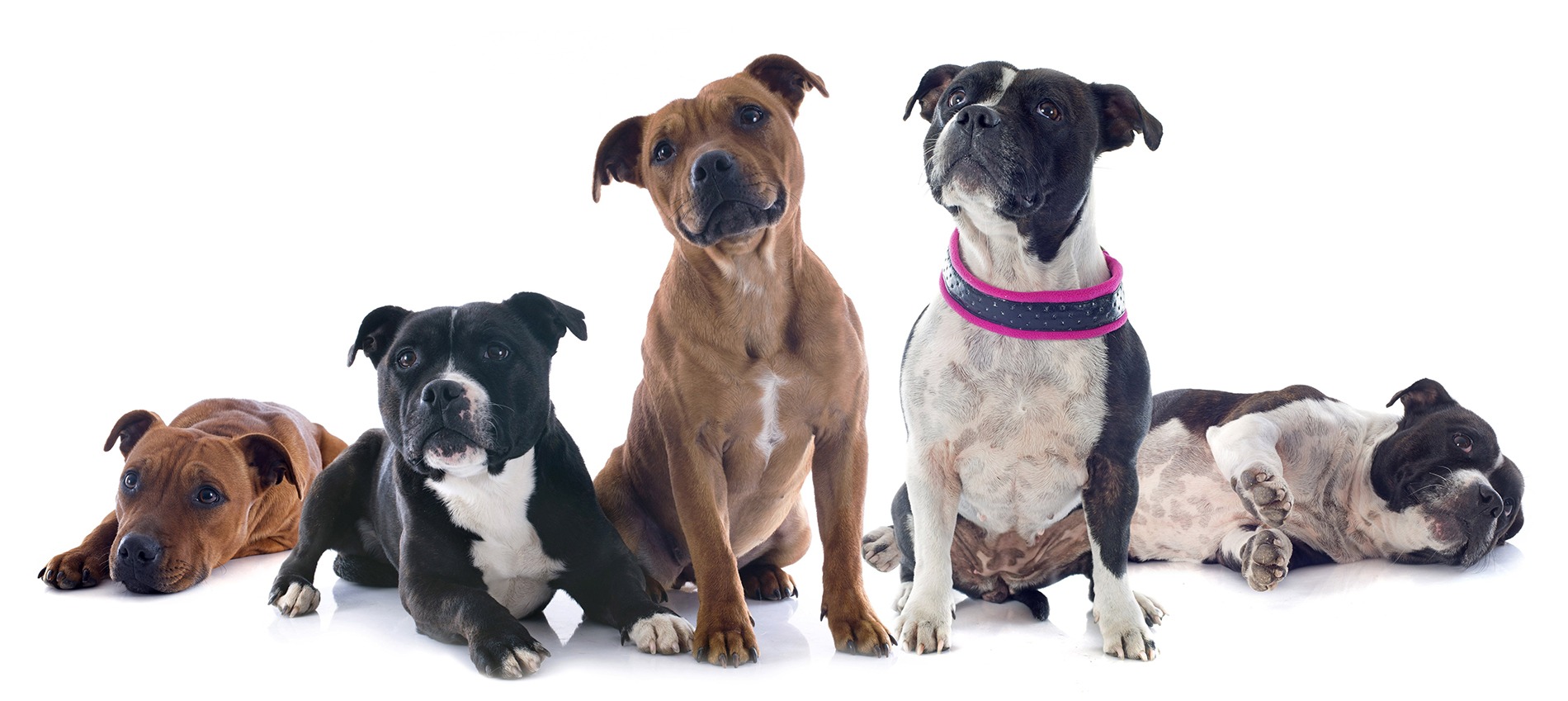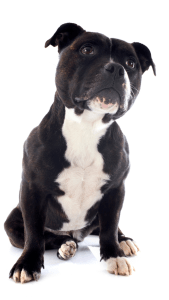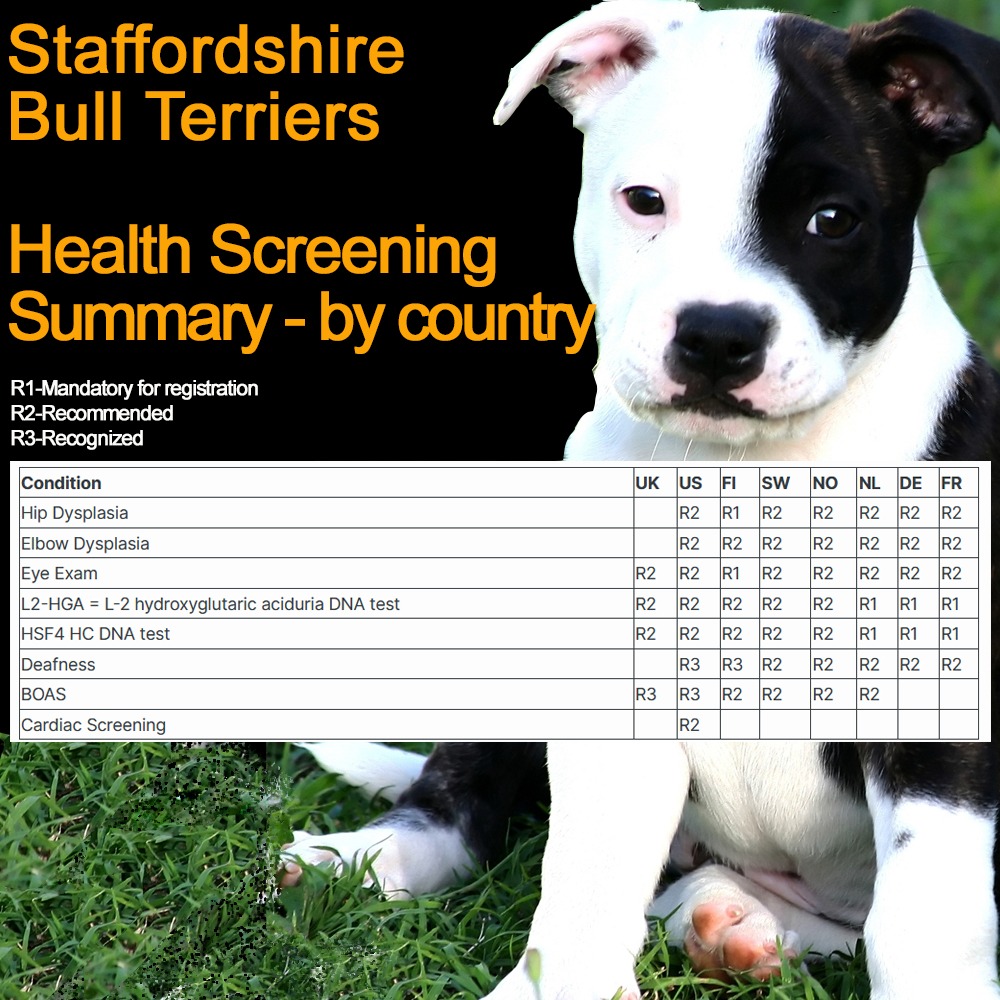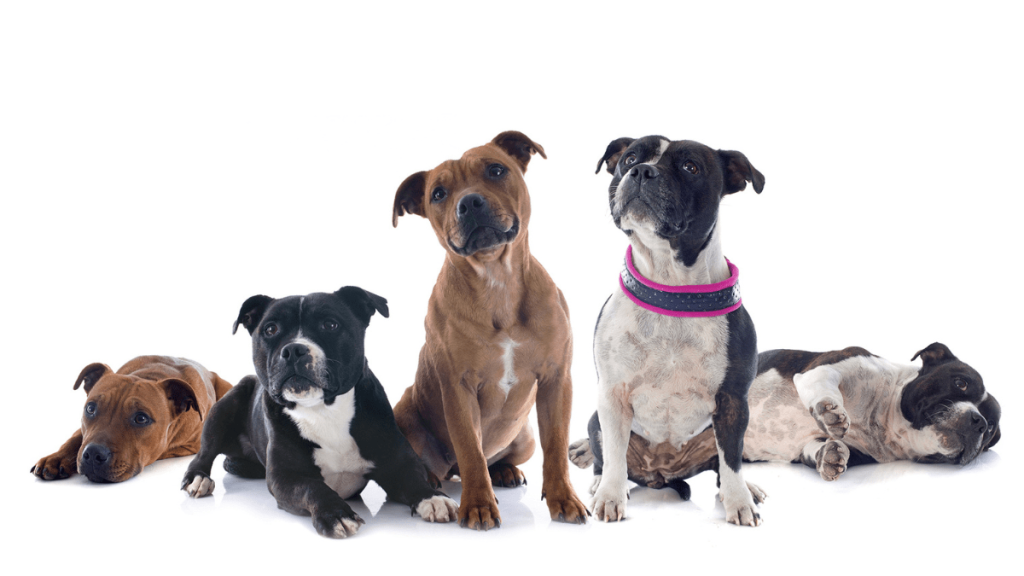Staying up to date with common, let alone rare, health risks in susceptible dog breeds can be difficult. In this regular feature, our Educational Partner, the International Partnership for Dogs (IPFD), signposts resources on a particular breed and highlights breed-specific diseases
Meet the Staffordshire Bull Terrier – Update Your Knowledge!

Meet the Staffordshire Bull Terrier – Update Your Knowledge!
IPFD has published “Get a GRIHP! on Staffordshire Bull Terriers” as an in-depth examination of health and well-being of this breed. The Staffordshire Bull Terrier a.k.a. Staffie is a ‘loveable, energetic, affectionate, and humorous dog. It is social, active, and playful. Explicit fears or aggression are rare in the breed.’1
The estimated lifespan of this robust breed is >10-14 years.1 Health strategies from various countries recommend or require screening to keep watch on conditions of interest (see figure below). The most common conditions that can impact the members of the breed are:

- Allergies and Atopy – conditions which may require lifetime management
- Eye conditions
- Early onset cataract – there’s a genetic test3
- Persistent hyper
- plastic primary vitreous (PHPV), also known as Persistent hyperplastic tunica vasculosa lentis (PHTVL) – this disease is detected in an eye exam; dogs with grades 2-6 of this condition should not be bred.
- Distichiasis and entropion (eyelashes and lids)
- Orthopedic conditions (cruciate ligament rupture, patella luxation, elbow dysplasia and luxation, hip dysplasia)
- Brachycephalic obstructive airway syndrome (BOAS) in some short-muzzled dogs
- Epilepsy
- Neurometabolic disorder L-2-Hydroxyglutaric Aciduria (L-2-HGA) – there’s a genetic test4
- Typically, an early onset
- Symptoms include epileptic seizures, ‘wobbly’ gait, tremors, and muscle stiffness as a result of exercise or excitement.
- Progressive, but symptoms can be successfully managed with affected dogs potentially living a normal lifespan – severity of symptoms is variable which may affect lifespan.
Nordic Kennel Clubs list the Staffordshire Bull Terrier in their Breed Specific Instructions (BSI).2 The instructions were developed in 2014 to identify trends towards exaggerations before they give rise to problems. Listed areas of risk in this breed include breathing and skin problems, but also bite: the lower canine teeth going up into the roof of the mouth.
The potentially heritable nature of cruciate ligament ruptures is something to consider when giving breeding advice. Existence of BOAS in the breed speaks for ensuring that dogs used for breeding have open nostrils and a long enough muzzle – and no clinical signs of BOAS.
Vets should advise clients and prospective owners to socialise and train Staffies well. The high energy level of these dogs means daily exercise is required. Some dogs may show aggression towards other dogs and may possess a strong prey drive.

Conditions of interest
References:
- Get a GRIHP on Staffordshire Bull Terriers – https://dogwellnet.com/content/health-and-breeding/breeds/breed-specific-health-reports/get-a-grihp-on-staffordshire-bull-terriers-r796/
- Nordic Kennel Union’s Breed-Specific Instructions https://www.skk.se/en/NKU-home/projects/breed-specific-instructions/
- Primary Hereditary Cataract in IPFD’s Genetic testing database: https://dogwellnet.com/ctp/phenes/275-primary-hereditary-cataract-phc/?breeds=447
- L-2-Hydroxyglutaric Aciduria (L-2-HGA) in IPFD’s Genetic testing database: https://dogwellnet.com/ctp/phenes/182-l-2-hydroxyglutaric-aciduria-l-2-hga/?breeds=447
The International Partnership for Dogs (IPFD) is a non-profit working for dog health, well-being, and welfare. This article has been prepared by its acting CEO, Katariina Mäki, PhD (Anim Sc)

full

